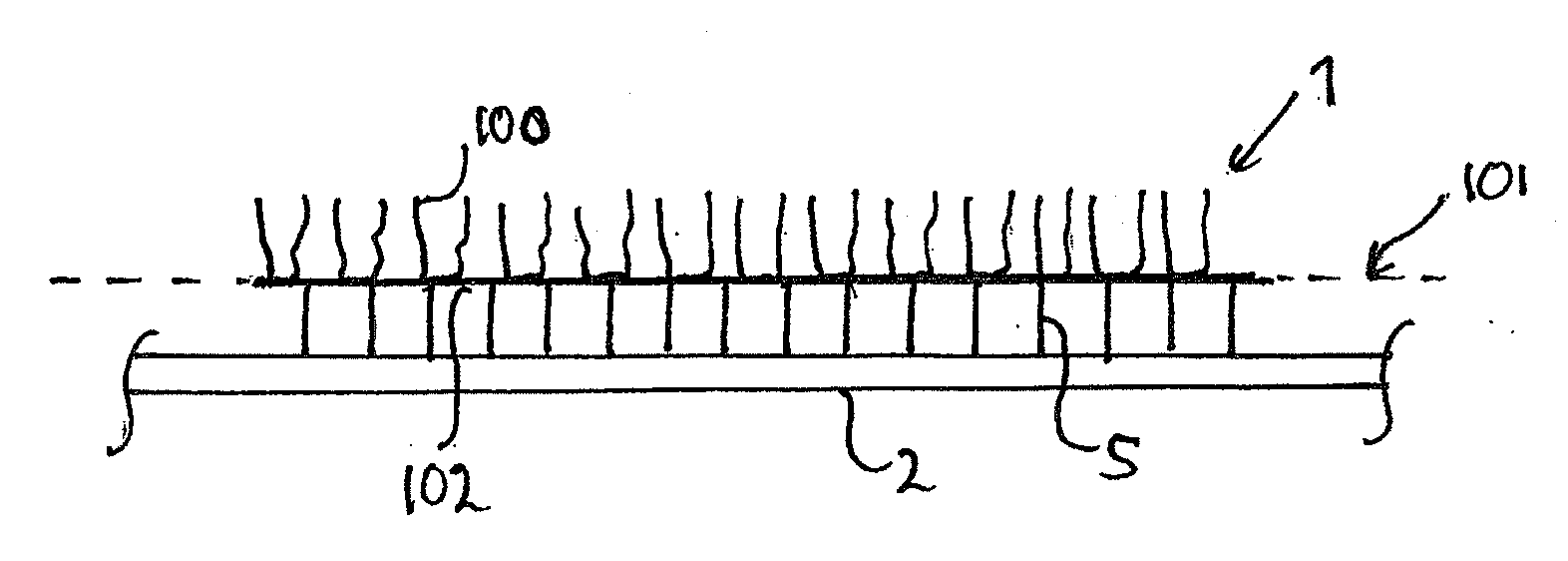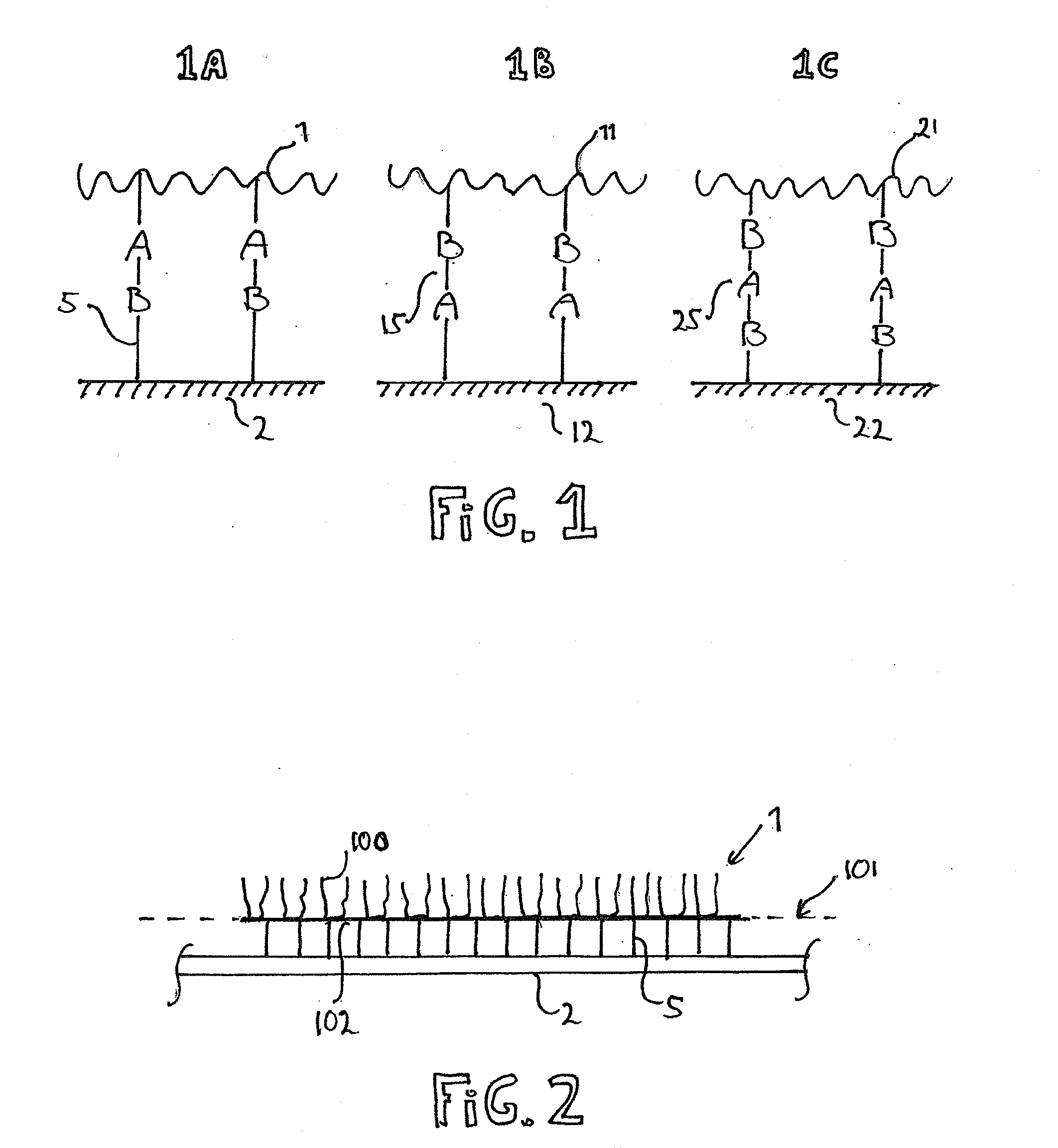Method to Produce a Textile Product and a Textile Product Resulting from the Same
a textile product and textile technology, applied in the field of textile products, can solve the problems of non-resistance to moisture of latex coverings, environmental hazards, formation of mildew and molds, etc., and achieve the effects of convenient and reliable connection, easy recycling, and cheap material
- Summary
- Abstract
- Description
- Claims
- Application Information
AI Technical Summary
Benefits of technology
Problems solved by technology
Method used
Image
Examples
example 1
[0073]Three intermediate products 1′ were made to be subjected to a fibre-binding process according to the invention. These products are described in Table 1. All three products were based on non woven primary backings available from Freudenberg, Weinheim, Germany under the tradename Lutradur™, viz. Lutradur T6412 and Lutradur eco respectively. Two different types of yarns were used. The first yarn was PA6 / 2600 / 240 / RDD / du of Aquafil, Arco (TN), Italy, which yarn has an uncompressed yarns thickness of about 1 mm. The second one was a yarn made from recycled PET, obtainable from Pharr Yarn, Mc Adenville, N.C., USA, which yarn has an uncompressed yarn thickness of 1.3 mm. It is noted that the latter yarn is indicated to be a “polyester” yarn by the manufacturer. The yarns were applied to the backings by forming loops at the back of the backing material, while at the same time extending through this backing to form piles at the front surface. Two cut piles as well as one loop pile inter...
example 2
[0078]In a first experiment the principle is shown that a self-supporting textile product can be thermo reversibly bound to a dimensionally stable carrier material using a diene and dienophile as reactive molecules, leading to thermo reversible covalent interactions. For this, a commercially available maleimide coated glass slide (Xenopore, MSP 000 10; available from Xenopore, Hawthorne, N.J., USA) was used. The textile product was a fabric of polyamide fibres tufted in a polypropylene woven fabric. The fabric was made self-supporting by melting the backside with a little flame, sufficient to fixate the individual filaments in their yarn. The additional reactive molecules were comprised in a mixture of butyl-methacrylate (85 molecular percent) and furfuryl-methacrylate (15 molecular percent).
[0079]This mixture was spread out over the glass slide (0.44 grams on a slide weighing 4.66 gram; which is believed to be an excess of reactive mixture) and warmed in an oven at 175° C. for 2 mi...
PUM
| Property | Measurement | Unit |
|---|---|---|
| Frequency | aaaaa | aaaaa |
| Frequency | aaaaa | aaaaa |
| Length | aaaaa | aaaaa |
Abstract
Description
Claims
Application Information
 Login to View More
Login to View More - R&D
- Intellectual Property
- Life Sciences
- Materials
- Tech Scout
- Unparalleled Data Quality
- Higher Quality Content
- 60% Fewer Hallucinations
Browse by: Latest US Patents, China's latest patents, Technical Efficacy Thesaurus, Application Domain, Technology Topic, Popular Technical Reports.
© 2025 PatSnap. All rights reserved.Legal|Privacy policy|Modern Slavery Act Transparency Statement|Sitemap|About US| Contact US: help@patsnap.com



